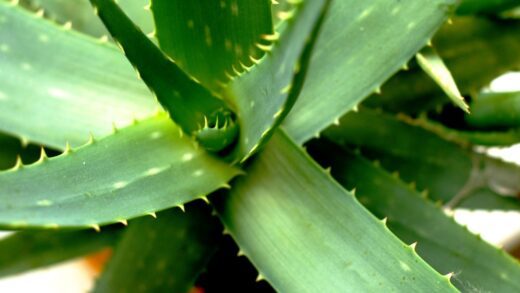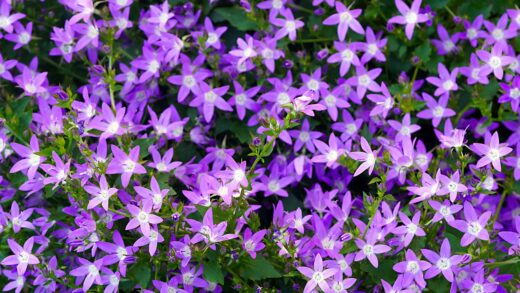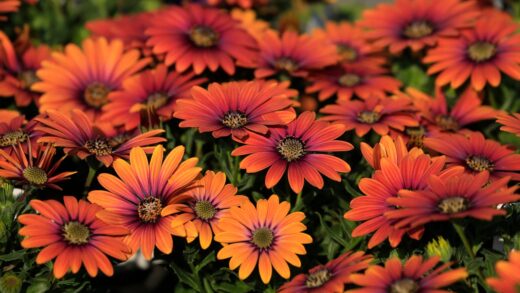Meeting the nutrient requirements of the Burnet Rose is a refreshingly simple task, as this hardy species has adapted to thrive in soils that are naturally low in fertility. Its origins on coastal sand dunes and sparse heathlands mean it is not a “heavy feeder” like modern hybrid tea roses, which often require regular applications of rich fertilisers to perform well. In fact, over-fertilising a Burnet Rose can be more detrimental than not fertilising it at all. Excessive nutrients, particularly nitrogen, can stimulate a flush of weak, sappy growth that is more susceptible to pests, diseases, and wind damage, often at the expense of flower production. Therefore, the approach to fertilisation should be one of moderation and observation, aiming to supplement the soil only when necessary rather than adhering to a rigid feeding schedule.
For a Burnet Rose planted in reasonably good garden soil, supplemental fertilisation may not be necessary at all. The slow decomposition of organic matter already present in the soil, combined with an annual top-dressing of compost or well-rotted manure, is often sufficient to provide all the nutrients the plant needs to thrive. This slow-release, natural approach mimics the conditions the rose is adapted to and supports a healthy soil ecosystem. A healthy soil rich in microbial life will make nutrients more readily available to the plant’s roots, creating a self-sustaining system.
If you are growing your Burnet Rose in very poor, sandy soil that is deficient in organic matter, a light application of a balanced fertiliser in the spring can be beneficial. Look for a general-purpose rose food or a balanced granular fertiliser with an N-P-K ratio (Nitrogen-Phosphorus-Potassium) where the numbers are relatively equal, such as 5-5-5 or 10-10-10. A slow-release formulation is always preferable, as it provides a steady supply of nutrients over several months rather than a sudden jolt that can cause excessive leafy growth.
The timing of any fertiliser application is crucial. If you choose to fertilise, it should only be done once a year, in the early spring, just as the new growth begins to emerge. This timing provides the plant with the nutrients it needs to support the development of leaves, stems, and flowers for the coming season. Avoid fertilising in the late summer or autumn, as this can encourage a flush of new, tender growth that will not have time to harden off before the first frosts and will be easily damaged by the cold.
Understanding nutrient needs
The Burnet Rose, like all plants, requires a range of macronutrients and micronutrients for healthy growth. The three primary macronutrients, represented by the N-P-K ratio on fertiliser packaging, are Nitrogen (N), Phosphorus (P), and Potassium (K). Nitrogen is essential for promoting lush, green foliage and overall vegetative growth. However, as the Burnet Rose is not prized for dense foliage but for its flowers and hips, excessive nitrogen should be avoided as it can inhibit blooming.
More articles on this topic
Phosphorus plays a vital role in the development of a strong and healthy root system, as well as being crucial for flower and fruit (hip) production. This makes it a particularly important nutrient for the Burnet Rose. A soil with an adequate supply of phosphorus will support a plant that is well-anchored, resilient, and produces an abundance of blossoms and the subsequent decorative hips. Many soils have sufficient phosphorus, but in deficient soils, adding bone meal or a fertiliser with a higher middle number (P) can be beneficial.
Potassium is essential for the overall vigour and health of the plant. It helps to regulate many of the plant’s internal processes, including water uptake and photosynthesis. Crucially, potassium strengthens the plant’s cell walls, which improves its resistance to diseases, pests, and environmental stresses such as drought and cold. A good supply of potassium ensures the plant is robust and hardy, which is a key characteristic of the Burnet Rose.
In addition to these macronutrients, the rose also requires a host of micronutrients, such as iron, magnesium, and manganese, albeit in much smaller quantities. In a healthy soil with a good amount of organic matter, these micronutrients are usually present in sufficient amounts. Using organic amendments like compost and well-rotted manure is an excellent way to supply a broad spectrum of both macro- and micronutrients in a balanced, slow-release form that the plant can easily utilize.
Organic vs. synthetic fertilisers
When choosing how to provide nutrients for your Burnet Rose, you have the option of using either organic or synthetic fertilisers. Organic fertilisers are derived from natural sources, such as compost, well-rotted animal manures, bone meal, blood meal, and seaweed extracts. These materials not only feed the plant but also feed the soil. They improve the soil’s structure, increase its water-holding capacity, and support the beneficial microorganisms that are essential for a healthy soil ecosystem.
More articles on this topic
The nutrients in organic fertilisers are released slowly as the soil microbes break down the organic matter. This slow-release process provides a steady, gentle supply of nutrients to the plant over a long period, which is ideal for a low-demand plant like the Burnet Rose. This method avoids the risk of fertiliser burn and the promotion of weak, sappy growth that can result from a sudden influx of nutrients. An annual top-dressing of a couple of inches of compost is often the only “fertiliser” this rose will ever need.
Synthetic fertilisers, on the other hand, are manufactured chemical products that provide nutrients in a concentrated, water-soluble form. They can deliver a rapid and precise dose of specific nutrients to the plant. While this can be useful for correcting severe nutrient deficiencies quickly, it is generally not the best approach for the long-term health of a Burnet Rose or the soil. The rapid release of nutrients can easily lead to over-fertilisation and the problems associated with it.
Furthermore, synthetic fertilisers do nothing to improve the soil structure or support soil life. Their long-term, repeated use can even be detrimental to the soil ecosystem by harming beneficial microbes and earthworms. Given that the Burnet Rose thrives with a more natural, low-intervention approach, organic methods of feeding that focus on building healthy soil are almost always the superior choice. They align perfectly with the plant’s natural preferences and contribute to a more sustainable and resilient garden.
Application techniques
The best and simplest way to provide nutrients to your Burnet Rose is through an annual application of well-rotted organic matter. In the early spring, apply a one to two-inch layer of high-quality compost or well-rotted manure on the soil surface around the base of the plant. Spread it out over the entire root zone, which typically extends to the drip line (the edge of the plant’s canopy) and slightly beyond. There is no need to dig it into the soil; earthworms and other soil organisms will naturally incorporate it into the topsoil over time.
This top-dressing serves multiple purposes. As it slowly breaks down, it will release a balanced range of essential nutrients for the plant. It also acts as a mulch, helping to conserve soil moisture and suppress weeds. Furthermore, it continuously improves the structure of your soil, whether it is heavy clay or free-draining sand, making it a better growing environment for the rose’s roots. This single, simple action in the spring is often all the feeding a Burnet Rose requires for the entire year.
If you decide to use a granular synthetic fertiliser, it is crucial to apply it correctly to avoid damaging the plant. Always read and follow the manufacturer’s instructions regarding the application rate, as too much can burn the roots. Apply the fertiliser to moist soil in the early spring, scattering the granules evenly on the soil surface around the plant, starting a few inches away from the main stems and extending out to the drip line.
After applying the granular fertiliser, gently rake it into the top inch of soil. This helps to activate the product and prevents it from being washed away by heavy rain. Following the application, water the area thoroughly. This watering helps to dissolve the granules and carry the nutrients down into the root zone where the plant can access them. Never apply granular fertiliser to dry soil or directly against the stems of the plant.
Recognising nutrient deficiencies
Due to its modest nutritional needs, it is quite rare to see signs of nutrient deficiency in an established Burnet Rose. However, in extremely poor or depleted soils, some symptoms may appear. The most common deficiency in plants is nitrogen deficiency. This typically manifests as a general yellowing (chlorosis) of the leaves, which usually starts with the older, lower leaves first. The overall growth of the plant may also appear stunted and weak. A simple application of compost or a balanced fertiliser will usually correct this issue.
A less common but possible issue is iron deficiency, which also causes chlorosis, or yellowing of the leaves. The key difference between iron and nitrogen deficiency is that with iron deficiency, the yellowing occurs on the newest, youngest leaves at the tips of the branches, and the veins of the leaves often remain green. This condition is most common in soils with a high pH (alkaline soils), as the high pH makes the iron in the soil unavailable for the plant to absorb. Applying a chelated iron product can provide a short-term fix, but adjusting the soil pH over the long term is the better solution.
Phosphorus deficiency is very difficult to diagnose visually. It can sometimes cause the leaves to take on a dull, slightly purplish tinge, and it can lead to poor growth and reduced flowering. Similarly, potassium deficiency can be subtle, sometimes appearing as a yellowing or browning along the edges of the older leaves. Both of these deficiencies are uncommon in the Burnet Rose and are best prevented by ensuring the soil is amended with plenty of organic matter.
Before assuming your rose has a nutrient deficiency, it is important to rule out other potential causes for the symptoms. Poor drainage, over-watering, under-watering, and soil compaction can all cause yellowing leaves and stunted growth that can be mistaken for a lack of nutrients. Always assess the overall growing conditions of the plant before deciding to apply fertiliser. In most cases, improving the soil structure and drainage will solve the problem more effectively than adding more nutrients.
📷No machine-readable author provided. Svdmolen assumed (based on copyright claims)., CC BY-SA 3.0, via Wikimedia Commons


















